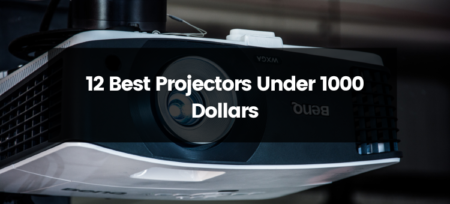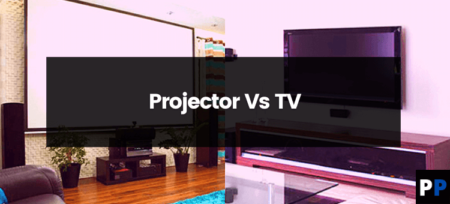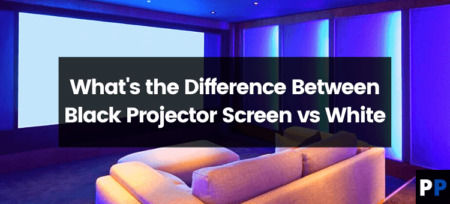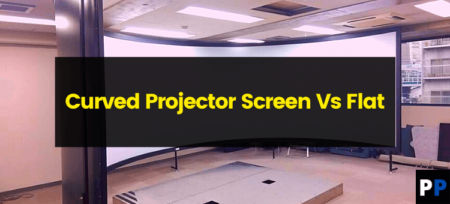Comparing a 3D projector that is 3D-ready is simple; however, it requires some research into the functioning of the projectors. Frame packing, polarized lenses, and frame-packing numerous terms will be mentioned that you need to know.
In addition, you’ll need to know the workings of 3D projectors and the differences between VGA and HDMI projectors. There’s always something to know about the various projectors. It’s not that difficult to grasp, even for the top projectors.
What Is a 3D Projector?
A 3D projector is a specific technology to produce a 3-D image on a two-dimensional substrate. The user can feel depth when using the 3D projector, which is impossible with the traditional projector.
Here’s a look at how they work, the advantages and disadvantages of investing in these technologies, and the different types of glasses you can put on to get the best 3D image view.
What Is a 3D-Ready Projector?
3D-ready projectors may cause dissatisfaction for specific buyers. They are made to only handle frame-sequential data transmissions. Frame-sequential data transmissions are typically the cheapest 3D formats, making these kinds of projectors the most affordable of the 3D family of projectors.
Frame sequential signals may be limited. They send images of full resolution in 120 frames per second. This could be considered slightly over the top when considering the amount of bandwidth needed for this.
3D-ready projectors need particular sources of data, like computers that have NVIDIA’s 3D Vision capabilities. This means that not all Blu-ray players will be able to supply the proper data signals needed to allow these projectors to create 3D images.
Comparing 3D and 3D Ready Projector Models
A 3D-ready or 3D-ready projector supports one of these four technologies–checkerboard, side-by-side, frame packing, or frame sequential. A projector that is 3D-ready can take and project stereo 3D transmissions.
But, it cannot show 3D material from set boxes and other devices that support 3D. If you have a projector that is 3D-ready, you’re limited in the content you can experience. Contrarily, real 3D projectors can be capable of working with a variety of 3D format transmissions.
“No matter what formats your player for media, computer game console, or cable box uses, it can manage all formats and perform flawlessly regardless of whether your video works with frame sequentially, side-by-side, or checkerboard packing”
What Sort of Format Does a True 3D Projector Work with?
An accurate 3D projector can handle any of the 3D formats, or at the very least, it can work with these formats. A projector that is 3D-ready can only work with a specific design, which you must learn about or double-check to make sure it matches up with the appropriate Blu-Ray disc, video film, or other media source.
It’s not the case with 3D projectors that cover nearly all of the above. It can adjust to resolution-halving formats or formats that employ 120 hertz of fast-frame change to mimic 3D stereo-stereoscopic depth.
“It also means that the 3D projector that’s not only 3D capable can project media from any device with no formatting or compatibility issues. Naturally, this feature of the 3D projector can make them more expensive than their 3D-ready counterparts”
What’s the Point of 3D-Ready Projectors since 3D Projectors are Superior?
3D projectors are famous for their capability to project 3D media on any device without compatibility issues, as they support all 3D formats. They can also be used with designs such as Blu-Ray 3D and HDMI 1.4 for 3D content.
It begs the question: what’s the benefit of investing in 3D-ready projects when 3D projectors are available? In one sense, 3D-ready projectors are less expensive. In specific projectors, it is seen as a feature used to promote the product and focuses on the brightness or resolution.
How to Find the Best 3D-Ready Projector Out There?
When using a 3D-ready projector, you have to be ready to read up on which supposed 3D format it operates so that you can match it up with the suitable media, like how a videogame 3D only supports checkerboard while others use frame packed.
A rule of thumb when buying a 3D-ready projector is to get one that uses side-by-side 3D. The vast majority of shows, video games, and movies go side-by-side despite its resolution-robbing 3D tactics.
What’s 3D Projection Anyway? How Does It Work?
A 3D projector mimics the look of three-dimensional vision on a flat surface or flat plane. A two-dimensional space like the wall or projector screen and any other character for projectors doesn’t display three-dimensional objects that are holographic with depth.
But, you can fool your eye into believing that you’re seeing something in 3D depth by simply placing two different images in front of each eye and resulting in an image that seems to have an extra dimension and volume; however, it is flat in reality.
How Do 3D Glasses Help with 3D Projection?
3D glasses are essential in separating the images to provide you with a movie that appears to have volumes and depth. Absolutely nothing short of the interaction of a fully-fledged VR headset can match the immersive experience possible with 3D glasses that work in sync and projectors. 3D projector.
Active shutter 3D glasses, in particular, close one eye while opening one eye to view formats such as frames sequential, frame-packed 3D. This contrasts with passive 3D, which requires you to wear 3D glasses with lenses that allow you to read every image displayed in each eye.
What to Expect from the Different 3D Formats?
A lot of 3D-ready projectors use the frame-sequence or frame sequencing transmission. They cannot process 3D videos with various 3D transmission formats, such as side-by-side frame packed, side-by-side, or checkerboard.
Examine the specifications of your 3D-ready device to find the models that support these particular formats. Many believe that 3D-ready is a scam since they use the wrong form for 3D in the display, resulting in an unintentionally messy mess.
It’s crucial to choose, for instance, a frame-sequential 3D-ready projector that can project frames sequentially with a high-resolution image projected at 12 frames per second. The most cost-effective DLP projectors generally use the frame-sequence 3D.
Conclusion
Although 3D is a baffling issue for any viewer, it’s one of the greatest inventions in recent times, right next to the idea of projecting moving images onto a large screen that can accommodate a vast auditorium.
Examine your 3D-ready projection device and 3D options for projectors before purchasing. Sometimes, it’s best to select a 3D-ready projector for media where most of you’ll be watching in the side-by-side format. If you’re looking to take the entirety of 3D video content, 3D projection devices are the best option.













